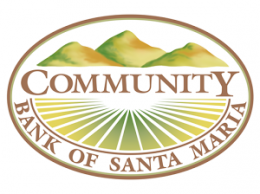Second round of PPP loans headed to Tri-Counties
Another round of the federal Paycheck Protection Program opened Jan. 11, and the region’s bankers expect the money to help a lot of small businesses that have been struggling through the pandemic and pandemic-related restrictions.
“We understand the urgency and the difficulty the business community is experiencing,” said George Leis, president of Montecito Bank & Trust, the largest bank based in the Tri-Counties. “We’re really hands-on trying to help our clients through the process.”
The new round is particularly important for businesses that have had to deal with new pandemic-related shutdowns, said said Jeff DeVine, the president and CEO of American Riviera Bank in Santa Barbara.
“They have a big question mark about when they’ll be able to reopen again,” he said.
This round of PPP funding has $284 billion allocated to help businesses. Businesses don’t have to have taken a first round of PPP funding to participate in this round, but there are some rule changes that will affect businesses that have taken their first round and are seeking a second round.
For a business to get a second round of PPP, they need to have already used all of their first round, something DeVine doesn’t think many businesses will have a problem with. Businesses taking a second round must also have fewer than 300 employees, which won’t affect many companies in Santa Barbara either, and must have seen at least a 25% reduction in revenue in any quarter of 2020.
“We learned a lot about the PPP process, given the 1,800 loans we did in the first round,” said Leis, “We have devoted quite a bit of time and staff to the process because we know how important it is.”
Second-round PPP loans also can’t exceed $2 million, which also affects very few businesses. Of the 600 loans American Riviera processed in the first round of the program last year, only eight were larger than $2 million.
“The vast majority of PPP loans were small,” DeVine said.
There were also some changes to help industries that have been hit especially hard. Hospitality and food services businesses—any business with a North American Industry Classification System code that starts with a 72—can get 3.5 times their average monthly payroll cost in the form of a PPP loan, instead of the 2.5 times average monthly payroll most other businesses will get.
Early access to the next round of PPP loans started Jan. 11 for certain types of financial institutions, including community development financial institutions, minority depository institutions, microloan intermediaries and certified development corporations, as long as they were issuing first-draw PPP loans. Those institutions will be able to make second-draw PPP loans on Jan. 13.
It’s currently unknown when other institutions, like community banks, will be able to start processing the new PPP loans, but guidance from the U.S. Small Business Administration said the program will open to those financial institutions “shortly thereafter.”
Small businesses can apply for a second-round PPP loan through March 31, or until funding for the program has been depleted.
EDITOR’S NOTE: This article was updated Jan. 12 with additional quotes from George Leis of Montecito Bank & Trust.










